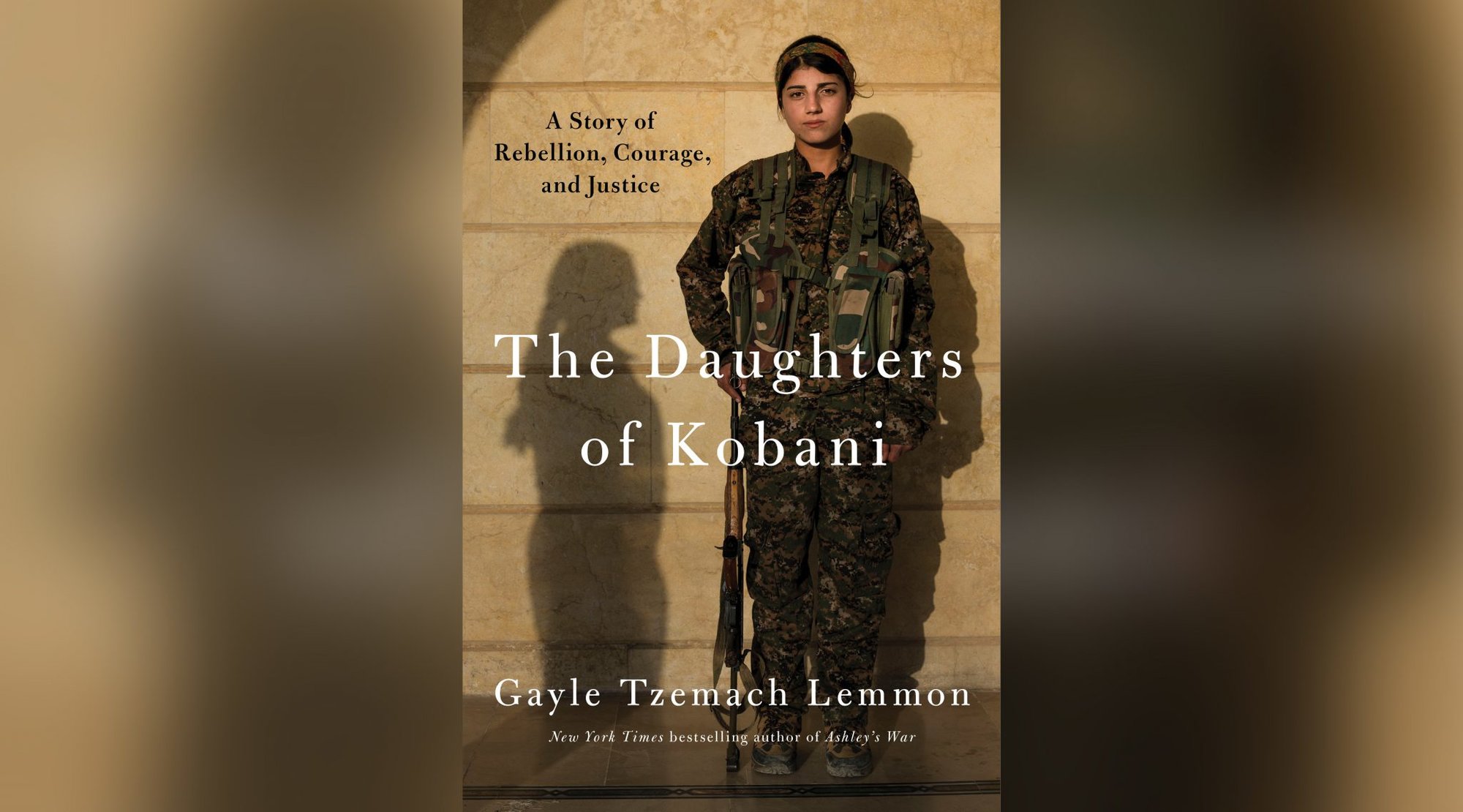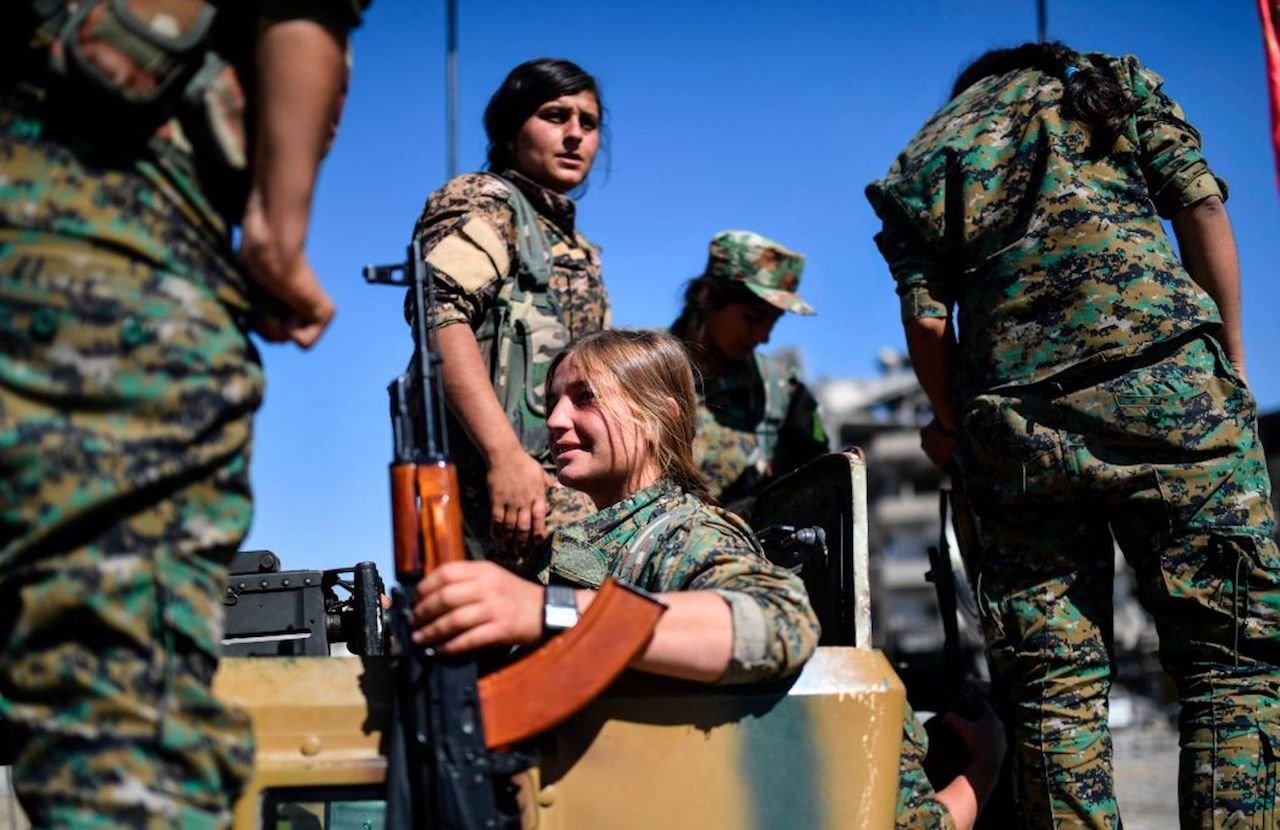Book Review: ‘Daughters of Kobani’ Shines Light on Women Warriors Who Took on ISIS and Won

The relative scarcity of female warriors of various sorts has made the most famous examples the stuff of legend. Sometimes actual legend, like the Amazons. Sometimes of history, like Joan of Arc.
In modern warfare, until recently, the most prominent examples of such women were those who fought in the Red Army on the Eastern Front during World War II. Most famously performing as snipers and attack pilots, Soviet female soldiers joined in the desperate fight for their motherland.
One of the things that pushed the Soviets to put women to more effective use than their Nazi adversaries, or even the other Allies, was their communist ideology, which despite its other myriad flaws promoted equality of the sexes.
It might not be surprising that the next time women would take on such combat roles would be under the leadership of another communist, Abdullah Ocalan, the founder of the militant Kurdish nationalist organization, the PKK. His progressive attitude toward women was a hallmark of the organization, and it is not a coincidence that the Kurds produced whole units of legendary female fighters.

The PKK at large has been a longtime thorn in the side of Turkey, Iraq, Syria, and eventually the Islamic State. In particular, during the fight against ISIS, its all-female Women’s Protection Units militia, known as the YPJ, would become known as one of the most feared units fighting ISIS in Syria. Gayle Tzemach Lemmon’s book, The Daughters of Kobani, tells the story of some noteworthy soldiers from that unit, as well as some of the background of the larger Kurdish struggle.
One of the most remarkable things we see about these women is that they are not the product of some liberal and progressive utopian state with a long history of honoring women’s rights. Kurdish society is still largely a traditional Islamic one. Lemmon describes women who, until the war, were largely on course for domestic lives with arranged marriages and limited education.
War has a way of crystallizing what is really important. The needs of the Kurdish people and the pride of these women combined to bring them to the fore. They weren’t relegated to support roles but engaged in sustained close combat in an urban environment. They weren’t in the rear in some fire base because the Kurds rarely had weapons bigger than medium machine guns, even as they fought ISIS troops armed with American weapons looted from Iraqi arsenals.
They certainly weren’t merely token individuals or small symbolic units created for the benefit of the media. The female YPJ units were the equals of the male YPG and formed elements in major maneuvers, often making up the vanguard of Kurdish offensives. These women fully realized the importance of their work, both in the larger cause of defending the Kurdish people and also to the future of women in Kurdish society.
Read Next: ‘PARTY IN 10’ — HOW TASK FORCE NORMANDY EXECUTED THE 1ST STRIKES OF DESERT STORM

Lemmon zooms in on some noteworthy women of the war. She covers several women on the ground, like Azeema and her friend Rojna, starting with their adolescent experiences and their journey to the YPJ, to combat in Kobani, through becoming unit leaders in the battle for Raqqa.
Interspersed with these accounts are views from the American perspective. The twisting saga of American support of the Kurds is detailed, from the laundering of aid to give plausible deniability in the face of the Kurds’ longtime Turkish foe to the abandonment of the Kurds in Syria in 2019. We also see key leaders of US Special Forces teams advising Kurdish forces.
Lemmon’s account is fast-paced and engaging. She conveys the essence of the battles she describes without becoming bogged down in the blow-by-blow. Daughters of Kobani successfully conveys the importance of its subjects’ fights, both as Kurds and as women. Unfortunately, the Syrian civil war is already fading in the consciousness of most Americans. With any luck, though, this book will bring at least these women’s part of the war’s legacy to the fore.
The Daughters of Kobani: A Story of Rebellion, Courage, and Justice by Gayle Tzemach Lemmon, Penguin Press, 288 pages, $27

BRCC and Bad Moon Print Press team up for an exclusive, limited-edition T-shirt design!
BRCC partners with Team Room Design for an exclusive T-shirt release!
Thirty Seconds Out has partnered with BRCC for an exclusive shirt design invoking the God of Winter.
Lucas O'Hara of Grizzly Forge has teamed up with BRCC for a badass, exclusive Shirt Club T-shirt design featuring his most popular knife and tiomahawk.
Coffee or Die sits down with one of the graphic designers behind Black Rifle Coffee's signature look and vibe.
Biden will award the Medal of Honor to a Vietnam War Army helicopter pilot who risked his life to save a reconnaissance team from almost certain death.
Ever wonder how much Jack Mandaville would f*ck sh*t up if he went back in time? The American Revolution didn't even see him coming.
A nearly 200-year-old West Point time capsule that at first appeared to yield little more than dust contains hidden treasure, the US Military Academy said.












